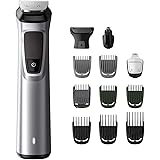Ambrane MagSafe Wireless 10000mAh Fast Charging Power Bank, Strong Magnet, 22.5W Output for iPhone 12 & Above, Android & Other Qi Enabled Devices + Magnetic Ring (Aerosync Snap, Blue)
₹1,499.00 (as of December 11, 2024 20:28 GMT +05:30 - More infoProduct prices and availability are accurate as of the date/time indicated and are subject to change. Any price and availability information displayed on [relevant Amazon Site(s), as applicable] at the time of purchase will apply to the purchase of this product.)Introduction
A gym is a place where individuals come to achieve their fitness goals, but it is also a place that requires proper safety precautions to ensure the well-being of its members. One of the most important steps in maintaining a safe environment is performing regular gym safety equipment inspections. This article will explore the importance of gym equipment inspection, what to look for during an inspection, and how it helps prevent injuries.
Why Gym Equipment Inspection is Crucial for Safety
Gym equipment can wear down over time, especially with heavy use. Without regular inspections, small issues can escalate into major problems, potentially leading to equipment malfunctions or accidents. Regular equipment checks can identify worn-out parts, malfunctioning components, and other safety hazards that could cause injuries.
Benefits of Regular Gym Equipment Inspections
Prevention of Injuries
One of the most significant benefits of safety inspections is the reduction in the risk of injuries. Worn-out machines or improperly maintained equipment can pose serious risks to gym-goers. Inspections help identify these hazards and ensure that equipment is functioning properly.Improved Equipment Longevity
Regular inspections help detect minor issues before they become bigger problems. By addressing wear and tear early, you can extend the lifespan of your gym equipment, ultimately saving money on repairs or replacements.Enhanced Member Satisfaction
A gym that is well-maintained shows its commitment to the safety and comfort of its members. Gym-goers are more likely to return to a facility that takes the time to inspect and maintain its equipment regularly.Compliance with Safety Regulations
Depending on your location, gyms are often required to meet certain health and safety standards. Regular inspections ensure compliance with these regulations, which helps avoid fines or penalties.
What to Look for During a Gym Equipment Inspection
When inspecting gym equipment, there are several key areas to check to ensure it is in proper working condition:
Structural Integrity
Inspect the frames and bases of all equipment to make sure they are not cracked or bent. This includes checking for rust, especially in metal components, as it can weaken the structure.Moving Parts
Examine all moving parts, such as pulleys, cables, and adjustable mechanisms. Ensure that they are functioning smoothly and are well-lubricated to prevent malfunctions.Bolts, Nuts, and Screws
Tighten any loose bolts, nuts, or screws that may have come undone during use. A loose part can cause malfunction or even result in an accident.Pads, Seats, and Grips
Inspect all pads, seats, and grips for any signs of damage or excessive wear. Worn-out padding can lead to discomfort, and damaged grips can increase the risk of slippage and injury.Electrical Equipment
For equipment with electrical components, check the wiring and power sources for any signs of wear or fraying. Faulty electrical equipment poses a serious fire risk.Weights and Weight Systems
Ensure that weights are securely fastened and that weight machines are calibrated correctly. A misaligned weight system can cause equipment to malfunction, potentially injuring a user.
Creating an Inspection Schedule
To ensure that your gym's equipment remains safe for all users, it is important to establish a regular inspection schedule. The frequency of inspections will depend on the type of equipment, its usage, and manufacturer recommendations. Here is a suggested schedule:
- Daily Inspections: Check for obvious issues like loose bolts, broken cables, and equipment cleanliness.
- Weekly Inspections: Inspect all moving parts, pads, and grips for wear and tear.
- Monthly Inspections: Perform a thorough inspection of electrical components, structural integrity, and weight systems.
- Annual Inspections: Conduct a comprehensive inspection of all gym equipment by a professional to ensure safety standards are met.
Best Practices for Gym Equipment Maintenance
In addition to inspections, it is essential to follow certain best practices to maintain the safety and longevity of gym equipment:
Clean Equipment Regularly
Regular cleaning helps prevent the buildup of dust, sweat, and grime, which can affect the functionality of the equipment. Use appropriate cleaning agents that will not damage the equipment.Proper Use of Equipment
Educate gym-goers on how to use the equipment correctly to avoid misuse, which can lead to damage or injury.Repairs and Replacements
Any faulty equipment should be immediately repaired or replaced. If the equipment cannot be fixed, remove it from the gym floor until it is in working order.Use Professional Services
For complex machinery, hire professional technicians to perform in-depth inspections and repairs. This ensures the equipment is thoroughly checked and serviced by those with the necessary expertise.
Conclusion
Regular gym safety equipment inspections are vital for creating a safe and effective workout environment. By proactively maintaining your gym equipment, you can reduce the risk of injuries, extend the lifespan of your equipment, and enhance member satisfaction. A gym that prioritizes safety through regular inspections and maintenance will not only attract more members but also ensure they can work out in a safe and well-maintained environment.







0 Comments